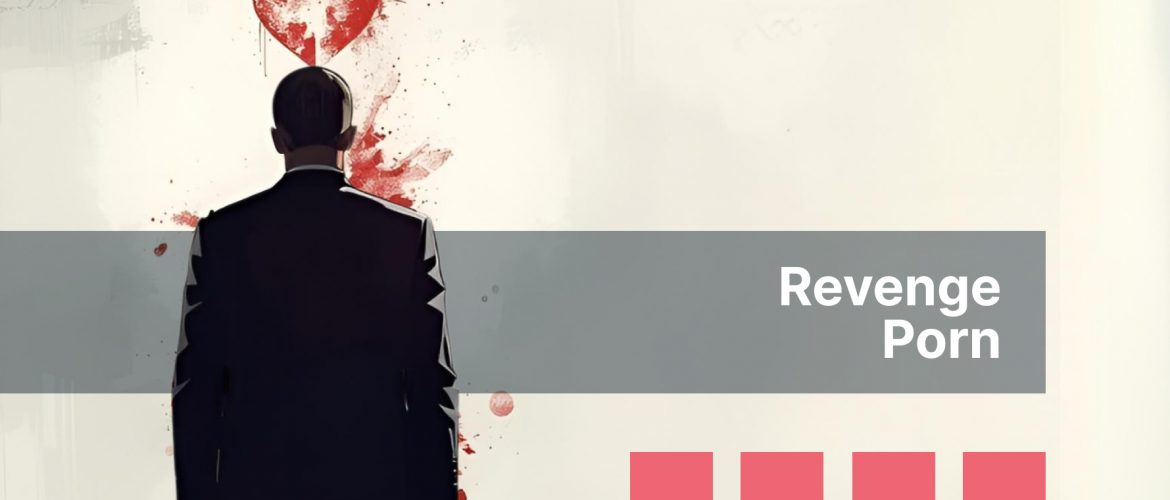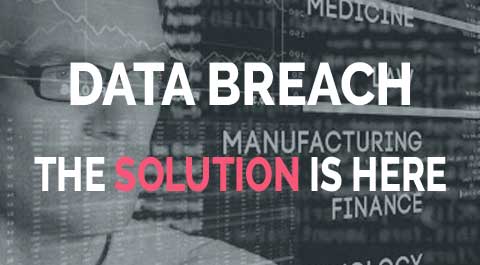These days, a lot of us share intimate messages and photos. Studies say eight out of ten people sent a racy message just last year, maybe to a special someone. But things can go south, relationships fall apart, and suddenly your private photos are all over the internet without your permission. Revenge porn hits you like a punch to the gut, and you have to move fast. This guide breaks down the basics of revenge porn and offers expert advice on how to handle it head-on.
What Is Revenge Porn?
Revenge porn is basically when someone puts your private, intimate photos out there without your okay. The pros call it “nonconsensual intimate image sharing,” and it can be real pictures or those creepy AI-generated deepfakes. An angry ex or a rival often leaks them to hurt you, usually after a breakup or a fight. That raw shame washes over you, and then the trolls show up with harassment, your reputation takes a nosedive, and the pain lingers. These creeps scatter stuff on social media, porn sites, or blast out texts to a bunch of people. It rips away your privacy shield and turns cherished moments into a weapon against you. Remember, you own your story and your photos. New laws are really pushing back hard on this. First, understand the mess, spot the dangers of sharing, and always double-check who you’re trusting before you hit send. That can stop a lot of trouble before it even starts. I remember a friend who shared something in the heat of a new romance, only to watch it blow up in her face when the trust broke. It taught me just how fragile a digital whisper can be.
Is It Illegal?
Laws are cracking down on unauthorized image drops in tons of places. The U.S. has strict rules, Britain is following suit, and Australia has huge fines. Jail time is a real possibility for offenders. These laws are crossing borders and focusing on image misuse everywhere. Back in May 2025, the U.S. rolled out the TAKE IT DOWN Act, which makes these posts a crime. Culprits can face up to two years behind bars, and if it involves a kid, there’s even more time. Websites have to scrub the stuff within two days if you report it. The laws also cover deepfakes. Flag the posts and threats, and the police can follow the digital breadcrumbs to unmask the people behind them. Stiff punishments are meant to scare off others. Get legal help fast, and jot down every detail you can. It’ll strengthen your case and help justice find the wrongdoers. You know, just last summer in my neighborhood, a case made big news where a guy was hit with charges. It really got people talking about why we need sharper teeth on these laws, and it showed me that justice, though slow, is definitely evolving.
Revenge Porn vs. Sexual Extortion: What’s the Difference?
Revenge porn is about a person sharing images without consent to cause emotional pain. Sexual extortion is when someone demands money or favors to stop the sharing. Their goals are different: revenge porn is about settling a score, while extortion is about personal gain, like cash or power. But they can get tangled up. A jerk might start by leaking a photo and then try to bargain with you to stop. Both situations are world-shattering; you lose faith in people and dread what the internet might reveal next. Look for clues of abuse, keep an eye out for threats after a leak, save all your messages, and never pay them off. These actions can lessen the danger. If you get hit with both, tell the authorities everything; they can connect the dots. Have you ever wondered why some people cross that line? From what I’ve seen in online forums lately, it seems to come from uncontrolled rage. Knowing the difference helps you prepare better for a fight.
Why Are These Cases Increasing?
Technology makes it easy to be invisible online. Fake profiles pop up in a flash, and people can dodge the spotlight with VPNs and Tor networks. It makes villains feel brave. Hookup apps make exchanges so fast that connections happen in chats, you miss the red flags, and pictures zip out. One tap can unleash pain around the globe. Still, digital investigators can get through the noise. Cyber sleuths can uncover IP addresses, device IDs, and timestamps to tie deeds to people. Bad guys slip up all the time, and that one mistake can unmask them. We’re seeing more reports now because of breakups, deepfakes, and AI creating fake images from real photos. The number of targets is growing, people are waking up to the dangers, and reports are climbing. Regulations are getting tougher, and platforms are watching more closely. Stay strong, lock down your privacy settings, and share less. That’s the best way to calm this wave. Lately, with AI being so big, I saw a news bit about a celebrity deepfake storm, and it really hit home how everyday people are facing the same storm now. It’s scary stuff.
Signs You’re a Target
The moment you find out is a sharp sting. An old flame leaks your photos, or fakes pop up, and you feel a huge wave of humiliation. But listen: the fault lies entirely with the person who did this. You carry zero guilt. They used your trust and feasted on your vulnerability. The culprits might make collages, tag you in posts, and then the bullying starts. Your friends might see it, you might have trouble at your job, and you start to feel isolated. You have to step up now. Reports lead to justice. Track the bad behavior, because law enforcement teams can spot patterns. First and foremost, protect yourself. Save your proof, cut off all ties to the person, and reach out to your support system. Healing starts with action. You can take back control, and with guidance, you’ll find the road to recovery. You will come out tougher. A buddy of mine confided in me about her ordeal last winter. The isolation crushed her at first, but sharing her story was the start of her turnaround. It showed me how one voice can create a ripple effect.
Immediate Steps to Take
As soon as you see the pictures, move fast. Gather all the evidence up front. Take screenshots of everything – the post, where it was, and the person’s profile. Log the time and date. Don’t talk directly to the person. That can just make things worse and give them a chance to erase their tracks. Experts know how to handle these conversations. Lock down all of your accounts. Change your passwords, turn on two-factor authentication, and check for any bugs or viruses on your devices. The bad guy might have burrowed deep. Look for emotional support. Talk to people you trust; they can be your secret lifeline. Never go through this alone. These steps can stop the harassment and give you a strong foundation to stand on. Speed matters; waiting just lets the problem get worse. Sometimes, in a panic, people forget the basics, like I did once with a hacked email. But a few quick changes saved the day. Lesson learned.
Here are the core actions to take right now:
- Gather every shred of proof immediately because details fade fast.
- Do not block or directly engage with the offender. Your goal is to gain time, save all evidence, and hand it over to professionals who can use the conversation to their advantage.
- Reach out to trusted friends or family for that initial emotional support.
- Update your passwords and security settings without delay.
- Document any threats or messages tied to the incident.
Reporting to the Authorities
Start with the police. Most stations have units that handle digital crimes. Show them all of your evidence. For young people or cases with photos of minors, call the National Center for Missing and Exploited Children. They are experts and respond quickly. If the messages feel like a scam or are coming from abroad, tip off cyber crime units. Global cases can go all the way to Interpol. Check back often and don’t be afraid to ask for updates. Your voice can help lead to action and build a safer community for everyone else. I chatted with a local officer once about a similar situation, and it was an eye-opener to see how reports stack up to catch patterns. It feels good to contribute.
Working with Digital Investigators
Finding hidden content can be a major challenge, which is where digital investigators really shine. They can scour the internet for you and push for sites to take down the material. They can also uncover the person behind the screen by pulling IP records and matching device information. A lot of these investigators have strong relationships with platforms, which can make takedowns happen faster. Fees vary, but there are also free resources and groups that support victims. Choose a professional who is well-vetted, and make sure they stick to the rules. This collaboration can help clear your name and prevent future attacks. From my perspective, these folks are like digital knights. I saw one case online where they turned despair into a win. It was truly inspiring.
Legal Options After Revenge Porn
A lawyer can take your fight to the next level. They can pursue criminal charges and also file a civil lawsuit for damages. Evidence like screenshots can help you win big. You might also have a case for defamation or can get a restraining order to prevent more leaks. Lawsuits can help cover the emotional pain and financial losses. Talk to an expert soon. Many offer a free initial consultation to help you understand your options and the potential outcomes. Have you ever faced a legal maze? I helped a family member navigate one for identity theft, and there are parallels here. Patience pays off.
Real Case: The Secret Facebook Group
There was a secret group on Facebook that ran from 2019 until May 2025. It stayed low-key until it suddenly blew up. Guys were sharing private photos of their partners without permission and had given the group a name that translates to “My Wife” in Italian. The group grew to 32,000 members, and the posts were filled with hateful comments. Women were the main targets. A journalist’s public exposé sparked outrage, and the site finally took the group down. Italy’s 2019 law covers this, and offenders can face up to six years in prison. The police are now tracking down the people behind the shadow profiles. This story chills me to the bone; it reminds me of the hidden dangers we all might be close to. But the public outcry really showed how speaking up can flip the script.
The Lasting Damage
The hit can leave deep scars. Worry, depression, and anxiety often follow. Relationships can get strained, and your career might suffer. Studies show harsh numbers: 93% of victims experience severe emotional distress, 42% seek mental health counseling, and 83% report significant life disruptions. The experience can kill your trust in people, make you anxious about being online, and make you doubt what’s real. Healing takes time. But there’s a lot of support out there. Therapy and support groups can help you rebuild your sense of self-worth. You own your story. It’s ironic how society gawks at scandals but shuns the people who are scarred. From my own conversations with survivors, resilience always shines through the cracks.
A Roadmap to Recovery
Healing is a steep road, but the path is there. Start by going after the person responsible. Digital footprints linger, and investigations can find them. Team up with law enforcement, file reports, and push for arrests. Justice is a powerful tool for healing. Get active about getting the content removed, and let experts help you. Create a safe space for yourself, whether it’s through therapy or a support group. Slowly, you can reconnect with people online, but set firm boundaries. Share your story; it helps others. Keep pushing. Join drives and causes. Your voice can change the rules for everyone. The path isn’t a straight line, as I learned from a group meetup last month. There are ups and downs, but community can pull you through. Just keep taking the next step.


